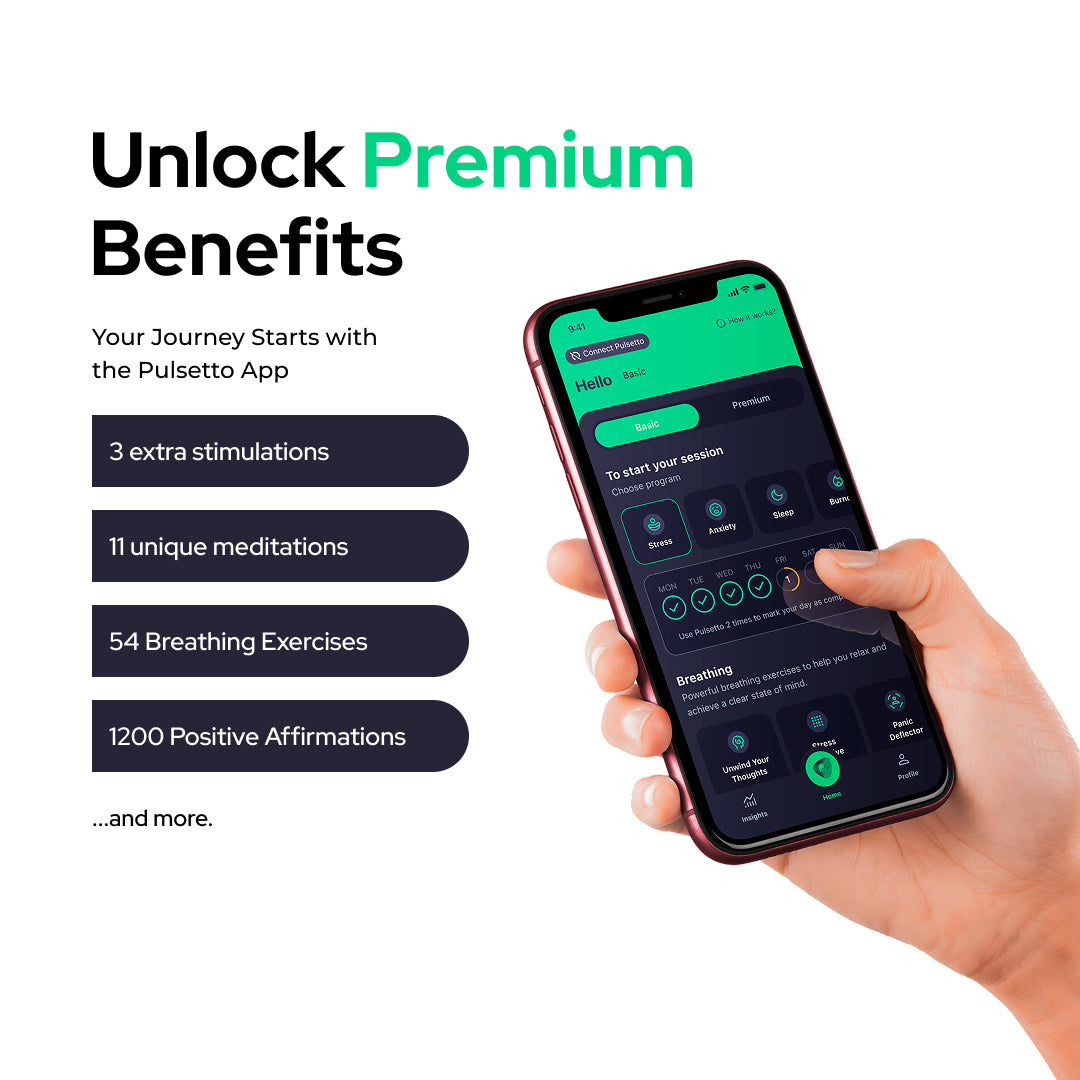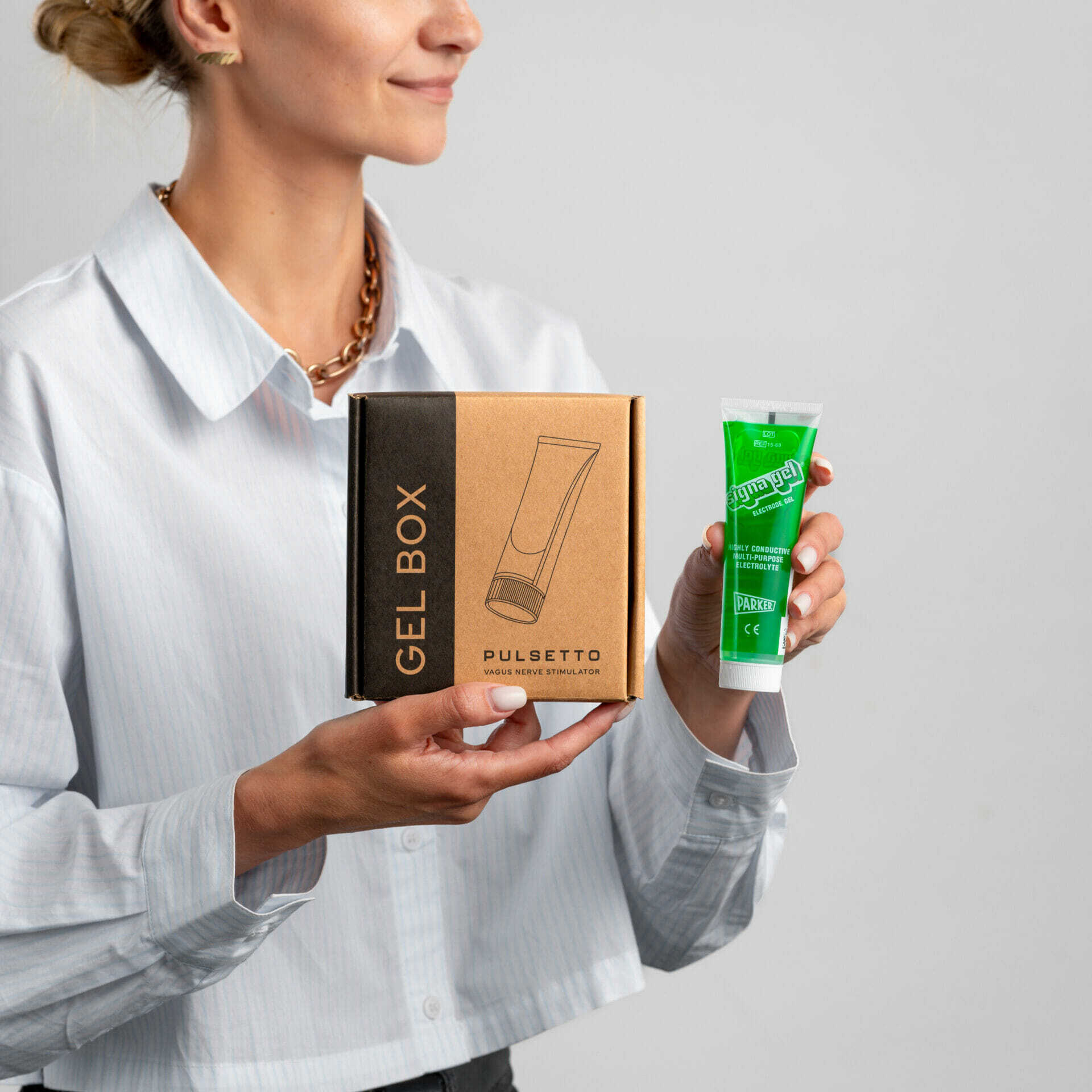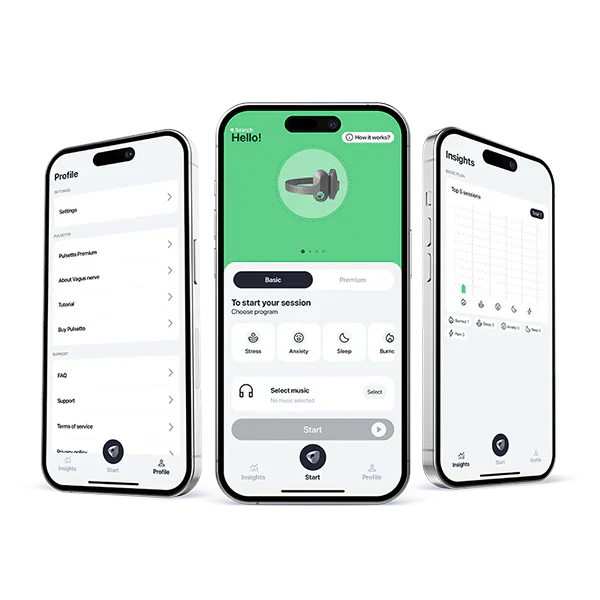Key Takeaways
- HRV tends to decrease with age, with a more pronounced decline occurring between the ages of 20 and 40, stabilizing afterward.
- Men typically have higher HRV scores than women until around age 50, after which the differences tend to equalize.
- Individuals with higher fitness levels, especially endurance athletes, often exhibit significantly higher HRV scores compared to the general population.
- Higher HRV may indicate greater cardiovascular fitness and resilience to stress.
HRV Importance
Heart Rate Variability (HRV) is a crucial indicator of your overall health and wellbeing. It measures the variation in time between each heartbeat - a higher HRV is generally associated with better cardiovascular fitness and resilience to stress.
Most importantly, HRV is a reflection of how well your autonomic nervous system is functioning. This system controls vital bodily functions such as heart rate, digestion, and respiratory rate, so keeping it in good shape is essential for overall health.
Measuring HRV Score
It's usually measured in milliseconds and can be tracked using various devices like fitness trackers and specialized HRV monitors. Most commonly, people use devices, including smartwatches like Apple Watches or smart rings like Oura, that sync with their apps to provide real-time HRV data. You should measure HRV consistently, preferably at the same time each day, to get accurate readings.
Pulsetto resembles headphones but is actually worn around the neck.
Understanding what constitutes a good HRV score can help you take proactive steps to improve your health.
|
Pulsetto: Revolutionary Vagus Nerve Stimulator Reduce stress and anxiety in just 4 minutes with Pulsetto, the innovative vagus nerve stimulator designed to biohack your parasympathetic nervous system. Clinically proven and FCC certified, Pulsetto has helped 86% of users feel calmer and less anxious within two weeks. Rated 4.5/5 by over 20,137 customers. Enjoy benefits like free worldwide shipping, a 30-day money-back guarantee, a 2-year warranty, and recyclable materials. |
Factors Affecting HRV Score
Age Impact
Age is one of the most significant factors affecting HRV. A 2020 research done using Fitbit data from 8 million users found that HRV tends to decrease with age. This decline is more pronounced between the ages of 20 and 40, after which it tends to stabilize.

The study found that HRV score still dwindled as age progresses, regardless of the gender.
For example, teenagers might have an HRV of around 80 ms, while those over 75 years old might have an HRV of around 25 ms.
Gender Differences
Gender also plays a role in HRV scores - generally, men have higher HRV scores than women until around the age of 50. After this age, the differences tend to equalize. This was confirmed by the Elite HRV app, which analyzed data from over 24,000 users and found that younger males had higher HRV scores compared to females of the same age.

The Elite HRV user base isn't a perfect reflection of the general population. Since they have more elite and recreational athletes, who usually have higher HRV scores, the sample statistics might differ slightly from some medical studies.
Lifestyle Choices
Your lifestyle choices can significantly impact your HRV score too.
Regular physical activity, a balanced diet, and adequate sleep are all factors that can positively influence your HRV. For instance, endurance athletes often exhibit significantly higher HRV scores compared to the general population. This is because regular exercise enhances cardiovascular fitness and autonomic nervous system balance.
On the other hand, poor lifestyle choices such as smoking, excessive alcohol consumption, and a sedentary lifestyle can lower your HRV. These behaviors increase stress on your body and negatively affect heart health, leading to reduced HRV scores.
That said, some stress can still be beneficial for your HRV score. Hormetic stressors (controlled, acute stressors that trigger beneficial adaptive responses in the body) such as intermittent fasting, cold exposure such as cryotherapy, and heat exposure such as sauna can make the body more resilient - and ultimately, boost HRV scores too.

Ice bath can strengthen the cardiovascular and nervous systems - leading to higher HRV score.
Environmental Factors
Environmental factors like air quality, temperature, and noise levels can also impact your HRV. Poor air quality can stress your respiratory and cardiovascular systems, leading to lower HRV scores.
Besides that, noise pollution can disrupt your sleep and increase sympathetic activity, both of which can negatively impact your HRV. Therefore, it's essential to consider your environment when trying to improve your HRV.
HRV Chart by Age and Gender
Below are the average HRV scores for men and women across various age groups. These values provide a benchmark for what is considered normal, helping you set realistic goals for improving your HRV.
- Men typically have higher HRV scores than women until around age 50.
- HRV tends to decrease with age, stabilizing after 40.
- Fitness levels can significantly impact HRV, with athletes often showing higher scores.
Here are the average HRV results taken from the Fitbit clinical study - these are average values, and individual HRV can vary widely:
Average HRV Score for Men
- 25-26 years old: 61 ms
- 30-31 years old: 56 ms
- 35-36 years old: 49 ms
- 40-41 years old: 43 ms
- 45-46 years old: 37 ms
- 50-51 years old: 34 ms
- 55-56 years old: 32 ms
- 60-61 years old: 31 ms
Average HRV Score for Women
- 25-26 years old: 57
- 30-31 years old: 53
- 35-36 years old: 47
- 40-41 years old: 42
- 45-46 years old: 37
- 50-51 years old: 34
- 55-56 years old: 33
- 60-61 years old: 31
HRV Variations in Different Age Groups
It's clear that HRV scores vary significantly across different age groups and between genders. These variations can help you understand what a good HRV score is for you, depending on your age and gender. For example, if you're a 35-year-old male, an HRV score of 49 ms would be considered average.
Besides that, understanding these norms can also help you set realistic goals for improving your HRV. If your HRV is below average for your age group, you might want to focus on lifestyle changes to boost it.
Interpreting HRV Scores
Interpreting your HRV scores can be challenging, especially if you're new to tracking this metric. However, understanding what constitutes a healthy HRV range and setting personalized goals can make the process easier.
Healthy HRV Range
A healthy HRV range varies from person to person, depending on factors like age, gender, and fitness level. Generally, higher HRV scores indicate better cardiovascular fitness and a well-functioning autonomic nervous system. For example, an HRV score of 70 ms for a 25-year-old male would be considered healthy.
Personalized HRV Goals
Setting personalized HRV goals can help you improve your overall health. Start by tracking your HRV consistently for a few weeks to establish a baseline. Then, make lifestyle changes such as increasing physical activity, improving your diet, and reducing stress to see if your HRV improves.
The goal is not to achieve a specific number but to see positive trends over time. If your HRV is consistently improving, it indicates that your overall health is also improving.
Benefits of Tracking HRV
Tracking your HRV can offer numerous benefits that contribute to your overall health and wellbeing. By understanding your HRV, you can make informed decisions about your lifestyle and take proactive steps to improve your health.
Stress Management
One of the primary benefits of tracking HRV is its potential to help manage stress. HRV is a reliable indicator of how well your body is coping with stress: higher HRV scores generally indicate that your body is more resilient to stress, while lower scores suggest that you may be experiencing higher levels of stress.

Here’s how Pulsetto helps with stress management.
By monitoring your HRV, you can identify periods of high stress and take steps to mitigate it. For example, practicing mindfulness, meditation, or deep-breathing exercises can help improve your HRV and reduce stress levels.
Recovery Monitoring
HRV is also a valuable tool for monitoring recovery, especially for athletes and individuals who engage in regular physical activity. After intense workouts, your HRV may decrease, indicating that your body needs time to recover. By tracking your HRV, you can ensure that you are allowing adequate recovery time between workouts, reducing the risk of overtraining and injury.
Improving Overall Health
Besides managing stress and monitoring recovery, tracking HRV can help you improve your overall health. Higher HRV scores are associated with better cardiovascular health, improved autonomic nervous system function, and greater resilience to illness. By making lifestyle changes that positively impact your HRV, such as exercising regularly, eating a balanced diet, and getting enough sleep, you can enhance your overall health and wellbeing.
Use Pulsetto to Improve Your HRV Score
Pulsetto Fit: Wellness, Upgraded

Description (Pulsetto Fit):
Key Features of Pulsetto Fit
-
Custom Fit: Comes with two removable magnetic paddings for different neck sizes, ensuring a snug, comfortable fit.
-
New Pulsating Mode: A rhythmic, wave-like stimulation that syncs with your breath for deeper nervous system relaxation.
-
20% Longer Battery Life: Offers about 1.2 weeks of daily use per charge.
-
Enhanced Durability: Reinforced materials make it built to last through daily wear.
-
Same Great App: Includes the same 5 programs and 30-day Premium trial as Lite, with identical sound library and add-ons.
-
What’s Included: Device, two paddings, 60g gel tube, USB-C cable, user guide.
-
Safety: FCC-certified, same ULRE tech as Lite. Consult a doctor if you have implantable devices.
Pulsetto - Your Peace & Better Sleep Partner
The Science Behind Vagus Nerve Stimulation

Pulsetto is a wearable device that uses vagus nerve stimulation (VNS) to promote relaxation and reduce stress and anxiety. By targeting the vagus nerve with gentle electrical impulses, Pulsetto can help induce a state of calm, making it easier to fall asleep and stay asleep.
Advantages of Pulsetto:
-
Stress Reduction: Experience significant relief from daily stress by activating your vagus nerve and shifting your body into a "rest and digest" state.
-
Improved Sleep: Pulsetto supports restful sleep by calming your nervous system, helping you wake up refreshed and energized.
-
Enhanced Mental Clarity: By promoting relaxation, Pulsetto aids in sharpening focus and reducing brain fog.
-
Boosted Heart Rate Variability (HRV): This device helps improve HRV, an important marker of heart health and resilience to stress.
-
Digestive Health Support: Vagus nerve stimulation positively impacts the gut-brain connection, aiding digestion and reducing bloating.
-
Chronic Health Support: Pulsetto offers support for individuals managing chronic stress, anxiety, and fatigue, helping to improve their quality of life.
What's Included:
-
Pulsetto Vagus Nerve Stimulation Device
-
USB-C Charging Cable
-
User Manual
How Pulsetto Works:
Using Pulsetto is simple and takes just 4 minutes to start feeling the effects. Here's how it works:
-
Apply a generous amount of gel to your neck or directly onto the electrodes.
-
Place the device on your neck.
-
Pair it with the Pulsetto app on your smartphone.
-
Choose your desired program and start the device through the app.
The device creates a gentle, pleasant vibration or tingling sensation in your neck area. This stimulation helps activate your parasympathetic nervous system, leading to a calmer, less stressed state.
Make your order today and get free shipping!
FAQ:
1) What is Heart Rate Variability (HRV) in simple terms?
Heart Rate Variability (HRV) measures the variation in time between each heartbeat. It shows how well your autonomic nervous system balances stress (sympathetic) and recovery (parasympathetic). A higher HRV usually indicates better health, resilience, and recovery. If you’re new, read Why We Should Care About HRV and explore the vagus nerve’s role in health.
2) What counts as a “good” HRV score?
There isn’t one universal “good” HRV number, it depends on your age, gender, and lifestyle. Younger individuals tend to score higher, while HRV naturally decreases with age. To know what’s realistic for you, compare your results against the HRV chart by age & gender.
3) How do age and gender affect HRV?
HRV declines gradually with age, and men and women show different average values. For example, a score that looks low in your 20s may be completely normal in your 50s. The HRV chart for age & gender helps you set the right expectations.
4) Which devices measure HRV best, and why do scores differ?
Different wearables use different algorithms, so HRV results may not match across devices. The Oura Ring calculates HRV overnight, while WHOOP and Apple Watch track throughout the day. To compare, check Oura Ring 3 vs WHOOP 4.0, Oura vs Garmin Venu 3, and the best Apple Watch alternatives.
5) How can I increase my HRV naturally?
The key is consistency: prioritize sleep, stress management, exercise, and nutrition. Relaxation techniques are especially effective, see Mastering Parasympathetic System Activation and How to Activate the Parasympathetic Nervous System. Evening rituals also help: Build a Relaxing Evening Routine or try a wind-down period before bedtime.
6) Does vagus nerve stimulation improve HRV?
Yes. Stimulating the vagus nerve helps shift the body into parasympathetic mode, which can boost HRV. Learn more in Unlocking the Vagus Nerve: A Comprehensive Guide and Expanding Applications of Vagus Nerve Stimulation.
7) What if my HRV is lower than average for my age?
Short-term dips are common with stress, poor sleep, alcohol, or illness. What matters is the trend over time. To recover, explore Top Biohacking Tools for Stress & Sleep and try parasympathetic practices in Best Ways to Reduce Anxiety.
8) How do I improve HRV on my wearable device?
Each tracker has unique methods. Pulsetto offers guides for specific devices:
9) Can better sleep alone raise HRV?
Yes. Deep and REM sleep directly improve HRV because the parasympathetic system is more active. Explore the Pulsetto Sleep Program, or try proven tools from Top Sleep-Enhancing Gifts 2024 and Best Tools for Sleep.
10) Which breathing or relaxation methods boost HRV?
Slow-paced breathing, mindfulness, and resonance-frequency breathing are powerful HRV boosters. Step-by-step guidance is available in Art of Nervous System Calming, Science-Backed Methods for Nervous System Regulation, and Relaxation Techniques for Sleep.
11) Do supplements influence HRV?
They can, especially those that promote sleep and relaxation, like magnesium, glycine, or L-theanine. For expert-backed protocols, see Dr. Andrew Huberman’s Supplement Stack, David Sinclair’s Longevity Stack, and Rhonda Patrick’s Supplement List.
12) How useful is HRV for athletes?
Very useful, athletes monitor HRV to fine-tune training and avoid overtraining. A great example is Ryan Medrano’s Olympic success with Pulsetto.
13) How can Pulsetto help me optimize HRV?
Pulsetto uses non-invasive vagus nerve stimulation to calm the nervous system and support HRV improvement. Learn more in Pulsetto Stress Relief & Sleep Aid, compare devices in Pulsetto Fit vs Pulsetto Lite, or see how it works with biofeedback in Pulsetto Wearables for Anxiety & Stress.
Understanding and improving your Heart Rate Variability (HRV) is one of the smartest moves you can make for your long-term health. As we’ve explored, HRV isn’t just a number, it’s a powerful reflection of how well your body handles stress, recovers, and maintains balance. From natural age-related declines to the impact of gender, lifestyle, and environment, your HRV score offers a window into your cardiovascular fitness and nervous system function.







